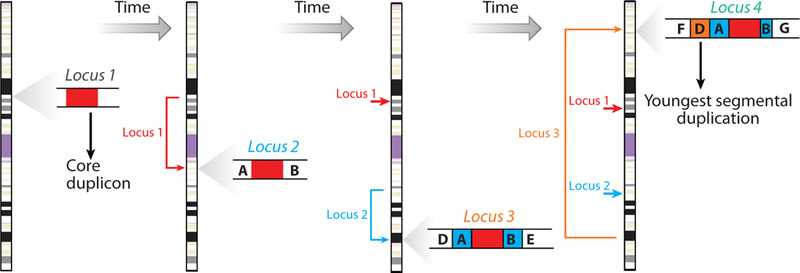Figure 5.

Core duplication hypothesis of human segmental duplications. Duplicative transposition or biased gene conversion duplicates copies to new locations with different unique sequences flanking the duplicated copy of the core; a secondary duplication moves into a third location but also carries flanking duplicons from the second locus to the third; the process repeats itself during the course of evolution, leading to the formation of large complex blocks of intrachromosomal segmental duplication along the chromosome that can now promote nonallelic homologous recombination. These events occur before and after speciation, leading to both lineage-specific and shared duplication blocks between closely related species. Segmental duplications located at the periphery are more likely to be evolutionary young or lineage specific (e.g., duplication D), whereas the core is common to all the duplication blocks. Paralogous sequence exchanges can occur between loci changing the sequence and erasing evolutionary history. Data based on primate comparative sequencing (78) and evolutionary reconstruction of human segmental duplications (77).
